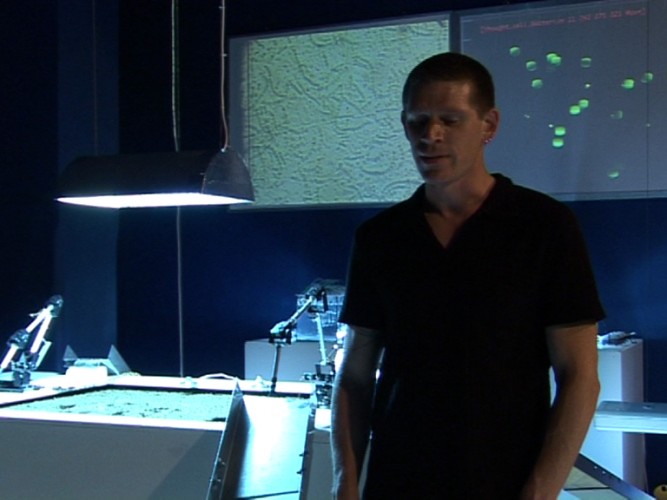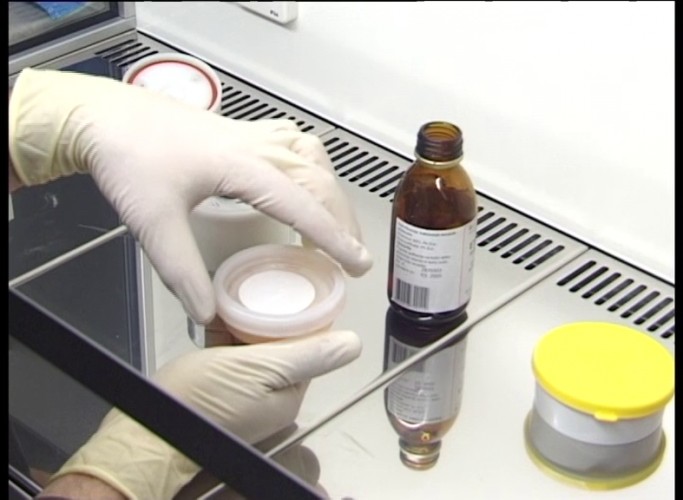Autoinducer_Ph-1 (cross cultural chemistry) exploits a traditional rice cultivation technique from SE Asia where Azolla is grown in large quantities and used as an organic, nitrogen rich fertilizer in the rice paddies. In the installation this process is reworked in an overly complexified, industrial, laboratory style way as a reflection on western agricultural techniques, our modern relationships with nature and the networked, machinic nature of ecologies.
Featuring an assemblage of pond-like structures, electronics, laboratory and hydroponic equipment Autoinducer_Ph-1 probes into and interferes with the symbiotic relationship between the cyanobacteria Anabaena and the water fern Azolla. Notions of data and information systems inherent in the relationships between the organic protagonists of the installation, and how they may be augmented, are realised by a synthetic software-based bacteria that interacts with them in its assumed roles of part time symbiont and part time parasite. Video projections which display evolution of the GCS graphic environment, and highly magnified video of Anabaena cultured under a video microscope.
Outcomes of this complex relationship and its proximity to symbiotic or parasitic characteristics determine the behaviours of the robotic rice farming system that forms the physical bulk of the installation. The installation loops biological, electro-robotic and computing processes together in a literally fertile interaction where the “primal soup” aspect of the Anabaena and Azolla cultures, and fragility of the young rice shoots, contrast strikingly with the computer-generated artificial chemistry molecules of the GCS. Photo: Miha Fras Supported by: Ministry of Culture of the Republic of Slovenia, Municipality of Ljubljana – Department for Culture and ŠOU of Lljubljana http://www.hostprods.net





